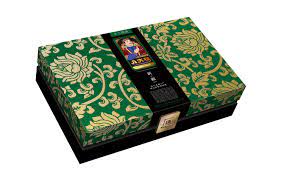What Is Brand Design?

Last Updated on April 4, 2023 by
Brand design involves creating a visual identity for your enterprise to make it stand out. Having a distinctive corporate image allows your target audience to associate with the business and, by extension, its products. A great design also offers your company a competitive edge within the market. This article outlines design components in the branding process and highlights the benefits of a distinctive design.
Major Components in the Branding Process
Part of creating a unique corporate image requires the use of fundamental elements that craft a brand’s identity. All of these individual components exist as a system to improve collaborations and promote the brand more effectively.
The elements that are part of the branding process include:
Logo
Colors and shapes
Website
Social media pages
Business cards
Staff uniforms
Email signatures
Tag lines
Packaging
Marketing collateral (pamphlets, leaflets, brochures)
Design templates
Since your brand will be identifiable through all these elements, each must be carefully selected and designed. Designs should be as distinct as possible to avoid confusing your target audience. For instance, having a staff uniform of a unique color can allow clients to recognize staff affiliated with your brand instantly.
Benefits of a Distinctive Corporate Image
Designing your corporate image is among the most important aspects of branding strategy. Having a unique design has its benefits:
Creates a Lasting Impression
Humans often comprehend visual designs better than written text, because it registers more effectively within the brain. Visual perception allows us to learn and, per human psychology, helps with organizing visual information. This is why an impressive design will create a lasting impression that clients can associate with your brand.
Part of creating an impression involves data visualization when marketing. More clients are interested in complex data presented in a simplified manner to make it more relatable. Customers enjoy associating with your brand, making it a household name and a part of their lives.
You can utilize interactive elements to improve online experiences for clients. Interactive elements engage potential customers in a conversation, often adding character to your marketing campaigns.
Gives a Competitive Advantage
Competitiveness within the market can determine how many customers you can get. Having a unique strategy helps your business acquire more clients and enjoy better turnover. Designing your brand by using attractive strategies can increase customer conversions.
Your ability to organically gain more clients places you in an advantageous position amidst competition. Competitive advantage also implies that more clients enjoy the value you provide, so they will likely work with you more in the future.
Emphasizes Brand DNA
Every brand has a unique DNA, or the essence of your identity and values as a business. Your corporate image enhances your brand DNA. It’s at the core of every business operation, keeping operations professional and moral. Clients can associate better with your business when you openly uphold specific values.
When creating a branding strategy, you must account for the company’s goals, ethics, objectives, and values. By communicating the nature of your business and its focus, you can reason more with your target audience.
Improves Brand Recognition
Besides creating a lasting impression, your brand should be easily recognizable. A popular way to improve brand recognition is to develop a catchy phrase, slogan, or jingle.
Key visual components that can also improve brand recognition include the logo, font, and color scheme. These elements help customers easily identify your brand outlets, which can attract more walk-ins if you have a shop. Other aspects like product packaging and advertising are great ways to create a cohesive identity for your company.
Earns New Referrals
Customers are often your best ambassadors since they can naturally bring more clients. When people have a positive experience with your product, they are likely to tell their family and friends. By serving one client satisfactorily, you improve the likelihood of getting referrals.
The client is the focal point of your design in the branding process. When planning the goals and processes of your marketing campaigns, you must factor in how well you can keep customers happy. The quality of potential customer leads can increase when you have an impressive corporate image.
Sets Expectations
Your corporate design should resonate with both customers and employees. Your employees should be able to resonate with the company’s mission and enact changes with each new development. Enabling employees to be the drivers of change allows the brand to grow to new levels.
The branding process communicates expectations for every stakeholder. You can improve the overall outlook of the business when everyone is on board.
Developing Your Unique Brand Design
In the face of regular business risks, as well-designed brand can withstand the tests of time. A consistent and stable brand is an intangible asset for the business. This often results in long-term benefits for the management and business.
Branding can be complex since there are dozens of factors that contribute to an effective design. Working with top brand design experts can help you achieve your desired results.
Read More: 5 Creative Ways To Design Custom Frozen Food Boxes


